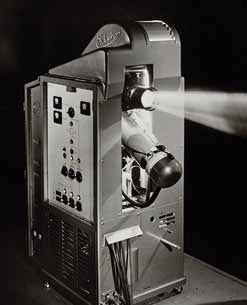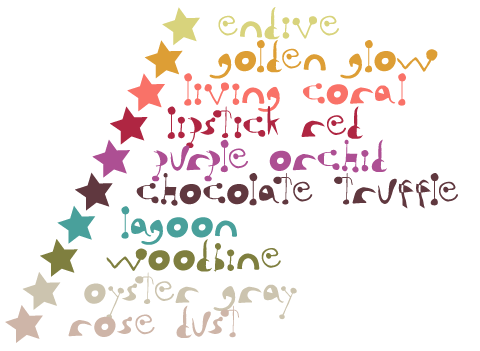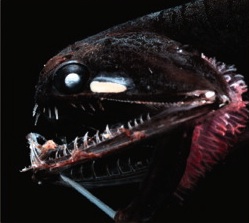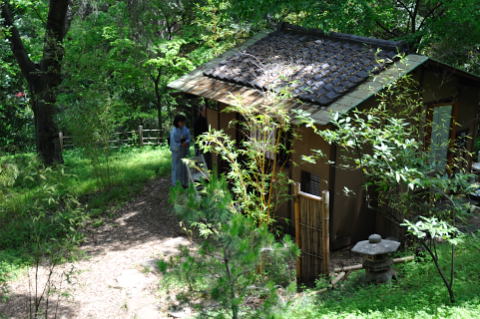Here in the US, 'beamer' is known as Till Tantau's LaTeX class for creating fancy presentations with very little effort. However, on the other side of the big pond, 'beamer' refers to a digital overhead projector, and this is where Till got the name for his class. Similarly, few people know the beamer's historical origins.
The history goes back much further than many believe, to a train ride from Bern to Zurich late 1939. The passenger was ETH professor Fritz Fischer, and he filed his patent application the 8th of November 1939. The fundamental idea was to separate image formation from light source.
More in detail, the idea was to coat a concave mirror with an oil film and to write on it the image with an electron beam. Where electrons hit the oil film, bumps emerged, creating a relief of the image corresponding to the bright and dim image points. The mirror was then illuminated with a very bright xenon gas discharge lamp. Where there was a bump, the light would be reflected through a lens onto the projection screen, while where there was valley, the light would be reflected back into the lamp.
Prof. Fischer called his invention the eidophor, Greek for image carrier. The image below shows the first eidophor used in 1943 to project TV programs in a large auditorium.

This first prototype had the problem that the oil film would decompose very rapidly. The problem was solved in a second prototype, but Prof. Fischer died a few days before the scheduled public unveiling the 31st of December 1947 at age 49.
The research was carried on at the ETH by Prof. Ernst Baumann, who in 1948 demonstrated a new prototype with movie quality (a color version was demonstrated only later, in fall 1951).
At that time, it was believed that the future of television would be deployment in movie theatres. Only few believed TV would instead make its way into living rooms on tiny screens. For this reason, for the commercialization of the eidophor, the scientists sought the collaboration with a company having good connections to the US and its movie industry.
They found their man in a Stanford graduate who had married a local Palo Alto girl and then returned after his Ph.D. to his native Zürich-Altstetten to start his data encryption company, Dr. Edgar Gretener AG.
As a side story for the color scientists among our readers, Dr. Gretener later renamed his company Gretag AG, moved it to Regensdorf, and also produced industrial automated photo printers and instruments for the printing industry. When his engineers developed a new tiny handheld spectrophotometer and Mrs. Gretener saw it, she exclaimed "Oh, it's just like a Topolino" [the nickname of the Fiat 500]. The name stuck and the instrument is called 'Lino' internally and 'Spectrolino' on the market.
Anyway, Dr. Gretener had the required connections and late 1950 a team from 20th Century Fox traveled to Zurich to look at the technology. Although they enthusiastically proclaimed they would order over 1000 units, they never sent a P.O.
Therefore, Gretag marketed the eidophor to conference centers and schools for closed circuit television (CCTV). The first mass-produced model was the 1959 Eidophor ep2, shown in the figure below:

It was quite popular for the projection in large rooms, like for lectures in universities, shareholder meetings, sports events, and contests. The figure below shows an eidophor deployed in the Zurich Congress Centre in 1959 for the live transmission of the Federal government elections in Bern.

When I was a student, the Eidophor was used extensively in experimental physics lectures, because the experiments being performed in the front could be seen in all detail by all 350 students filling the auditorium. All large auditoriums at the ETH were equipped with an eidophor. The image quality was excellent, because the oil film acted like a low-pass filter, giving smooth and rich images without noise. By comparison, 16 mm film had a lot of noise from the film grain.
Eidophor was the dominating large format projection technology until the 1990s. Gretag exited the projection market in 1997 and beamers based on LCD and DLP technology took over the market.
For the detailed story of the eidophor, see Caroline Meyer: Der Eidophor. Ein Grossbildprojektionssystem zwischen Kino und Fernsehen 1939–1999. Chronos Verlag. Zürich 2009.
Images: Library ETH Zürich.
 Looking up and under at God's goiterous throat
Looking up and under at God's goiterous throat










































